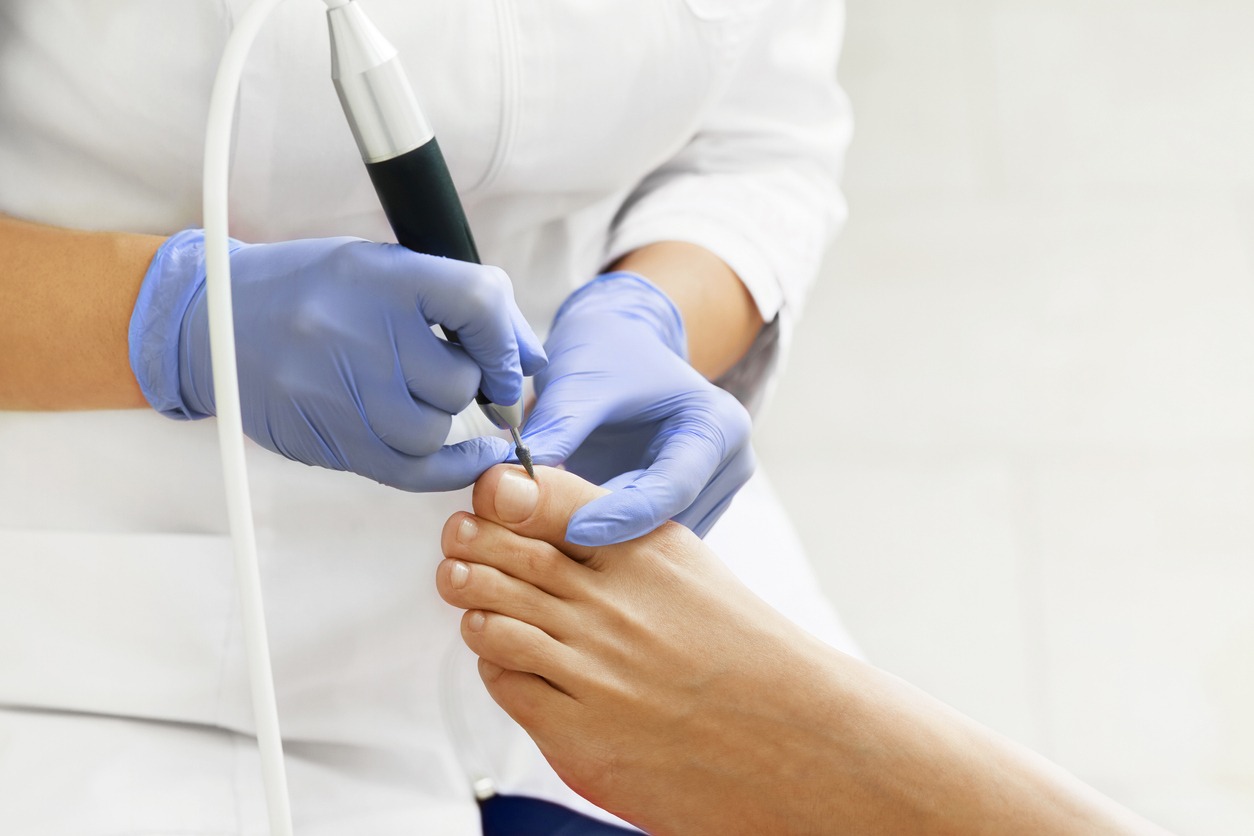Disclaimer: This article is for informational and educational purposes only and does not substitute professional medical advice. It is important to always consult a medical professional for any health issues.
Our toenails are important because their main function is to protect the toes. The top part of the toes are vulnerable to injury and stubbing. By having a protective nail on top of the toe, the toe is less vulnerable to infections and injury. Like the hair, skin, and fingernails, the toenails are also made up of keratin, which makes them tough and resistant to a lot of outside elements. However, there are times when the toenails can experience some painful conditions. Among these are curved toenails.
Having a curved toenail may bring a lot of pain along with redness and swelling. If the condition is left untreated, it may lead to infections. Individuals who have a curved toenail may notice the skin of the affected area become hard. Later on, pus or fluid may form in the adjoining area, which can make it more painful and uncomfortable.
Luckily, podiatrists have a treatment method to fix curved toenails. If you are wondering how, you are in the right place. In this post, we are giving you more information about what a curved toenail is and how it is treated.
What is a Curved Toenail?
A curved toenail is also referred to as a pincer nail or a trumpet nail. It is among the different types of ingrown nails and is often viewed as the most painful. Unlike the common ingrown toenail with only one side of the toe being affected, a curved toenail rolls into the skin on both sides of the nail plate. When the C-curve of the nail is examined, there is a noticeable exaggerated arch, and the ends of the nail will push visibly into the skin. [1]
The process of a curved toenail to develop may take years. As the nail progressively becomes more and more curved, the edges of the nail may start to irritate the toe and often cause an ingrown toenail. As the base of the nail is moved out to the tip, the curvature usually increases. A pincer nail may become so curved that when you look at the toe from the tip, the two sides of the toenail are almost touching. There are even times when they form a tube. A curved toenail is also usually accompanied by thickening of the nail, making it difficult to trim. [2]
Symptoms of Curved Toenails
In the early stages, a curved toenail may cause discomfort. People who have the starting stages of this type of nail often complain that they feel like something is caught under their nails. When they have it checked, nail techs will see the nail pinching into the skin and be able to remove the pressure by unrolling the nail.
However, as the condition worsens, the nail may dig deeper into the skin. The body then starts to respond as it would to any irritation, such as to a piece of glass or a splinter. The affected area becomes red, inflamed, and tender. The nail thickens, and the skin cracks where the nail pushes into it. There are also times when the curve can get so severe that the side edges of the nails will almost touch, which causes significant pain. When a curved toenail is left untreated, it may lead to infection. [1]
Causes of Curved Toenails
Curved toenails can either be hereditary or acquired, but the condition is often acquired. They are most common among seniors who are fighting their lack of flexibility when filing their nails, as well as the onset of degenerative arthritis. Having inflamed joints increases the likelihood of acquiring pincer nails. [1]
Wearing Tight Shoes
It is quite uncommon for curved toenails to be a hereditary condition, and it is more often caused by outside conditions. Among these is the wearing of tight shoes. The prime candidates for curved toenails are women who wear shoes that do not leave enough room for the toes. When the toes are compressed together, there is a higher chance that the nail will be pushed into the skin. It only takes a small, rough edge of a nail to hook onto the skin, and the first stage of a curved toenail may develop. [2]
Improper Nail Filing
The main cause of curved toenails is improper filing. The nail may be filed below the free edge, which causes the fleshy part of the skin to cover the nail. The nail pushes into the skin as it grows. Another issue related to nail filing is when a small spur is left on the nail after it has been tripled. When the nail grows, the spur will be pushed into the skin.
Incorrect Cutting
This is another common reason for developing a curved toenail. Most people tend to cut their toenails by following the curve of the toe. However, doing this only encourages the side of the nail to make a curl and dig into the skin. It is best to cut in straight lines to avoid possible in-growth.
In addition to these, there are also other possible causes of curved toenails, such as a fungal disease, certain medications, a tumor or cyst close to the nail bed, autoimmune diseases like lupus or psoriasis, and a family history of pincer nails.
Sometimes, incorrect cutting of toenails is due to the difficulty of some people in reaching their feet. If you experience this, read our article about the Ways to Cut Toenails When You Can’t Reach Your Feet for some useful tips.
Treatment for Curved Toenails
The treatment for curved toenails may range from corrective filing to surgery. When the nail is cut below the free edge, there is a chance for the nail to grow into the skin, particularly if the angles of the nail have been filed away or if a small branch is left on the edge of the nail, as we’ve mentioned earlier.
Non-Invasive Corrections
Corrective filing may allow the nail to grow and widen so that the edges will not dig into the skin. But aside from filing, doctors may also choose from various other corrective techniques, such as finding ways to widen the nail. One of the techniques to do this is to cut a “V” out of the middle of the free edge. This will remove the severe arch of the nail with the hope that the nail will grow wider and flatter.
In addition to that, doctors may also choose to drill a tiny hole on the sides of the nail and insert a piece of wire up one hole, across the nail, and down through the other hole. When the wire is constricted and secured, it pushes the high arch of the nail to flatten, which causes the edges of the nail to flair. The theory in this procedure is the same: the nail will start to naturally widen and flatten.
Surgical Treatments
If the patient does not respond to non-invasive corrections, doctors may opt to perform laser surgery or a technique referred to as phenol matricectomy. This surgical treatment can be done in the doctor’s office and needs only local anesthesia. The outer edges of the toenail will be removed, then a substance called phenol will be applied.
Phenol contains acid that will destroy the cells of the matrix and prevent the regrowth of the nail. Doctors may also prescribe an emollient to treat dry, cracked, itchy skin or an antibiotic to fight off or prevent infection.
How to Prevent Ingrown with Curved Toenails
If you have curved toenails, you may be tempted to trim them free and very short. However, this will only increase the risk of ingrown toenails. Therefore, it is a good idea to let the free end of the toenails grow out a little bit. You may also visit your podiatrist, as he can fit you with a special orthotic that can slowly straighten your nail plates. Once the nail plate is uncurled, it will be less likely to lead to an ingrown toenail. [3]
Trimming the toenails can be challenging for those who have curved toenails. When you do need to trim them, avoid clipping them at a sharp right angle. Trimming your toenails this way will make it easier for the nail to stab and grow into the skin.
If you are into sports or if you exercise a lot, it is best to carry an extra pair of socks so that you don’t work out in damp socks. It’s because moist environments can be a breeding ground for fungus and bacteria, which may lead to infections in ingrown toenails.
Conclusion
Curved toenails may be minor issues for some, but for other people, it may cause serious complications. These toenails may cause severe pain and infection, which could spread to the bone when left untreated. Therefore, if you notice a curved toenail is beginning to develop, visiting a podiatrist may help prevent it from becoming worse. They may recommend the right treatments and tips when it comes to cutting and filing your nails to correct your curved toenails. We hope this post helped you learn more about what a curved toenail is and how it is treated.
References
[1] Pratt, M. (2010, January 1). What are pincer nails? NAILS Magazine. Retrieved March 2, 2023, from https://www.nailsmag.com/388143/what-are-pincer-nails
[2] Gulf South Foot & Ankle, LLC. (2020). Pincer toenails. gulfsouth. Retrieved March 2, 2023, from https://www.gulfsouthfootandankle.com/pincer-toenails
[3] Upperline Health California. (2020, January 29). Curled toe nails? all about pincer nails and ingrown toenails. Upperline Health California – Foot and Ankle Care. Retrieved March 2, 2023, from https://www.upperlinehealthcalifornia.com/curled-toe-nails-all-about-pincer-nails-and-ingrown-toenails





